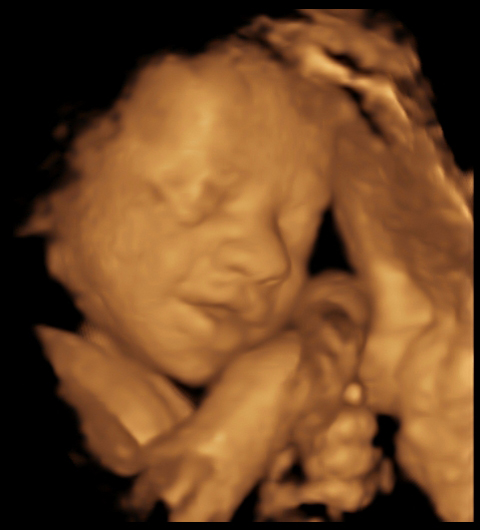
An Introduction To 3D/4D Ultrasounds And Their Benefits
2-D ultrasounds have become so much a part of the pre-pregnancy “checklist” that it’s hard to imagine a time when they weren’t part of a doctor’s toolkit. And as reassuring and potentially life-saving as these procedures can be, they’re a little bit of a let down. If your doctor wasn’t there to interpret those grainy, murky images, you’d have no idea of baby’s gender, let alone what body part you’re looking at. Wouldn’t it be wonderful if there were an ultrasound technology that gave viewers a crystal clear view of what was going on inside the womb?
That technology does exist, in the form of 3-D and 4-D ultrasounds. Images produced using these methods can reveal images of baby that are sharp enough to reveal birthmarks. “That sounds great!” you think. “So why hasn’t my OB/GYN made me an appointment for baby’s ‘photo shoot’?” The reason might be that while 3-D/4-D ultrasounds can be medically beneficial, they may not be appropriate for all pregnancies. What should you know before considering these types of ultrasounds?
Ultrasound Options
Using high pitched sound waves to capture internal images of the body, ultrasounds have many diagnostic uses besides examining unborn children. The most commonly administered ultrasound for expectant mothers shows images in 2-D. This technology has existed since the 1920s and images seen are flat and black, white, and grey. The purpose behind them is for doctors to ascertain a baby’s position, condition of the placenta, and to check for birth defects. If the baby happens to be in the right position when an ultrasound is done late in the fourth month of pregnancy, the baby’s gender can often be determined as well. But there are drawbacks to this type of ultrasound. The distorted sound waves and low resolution that sometime accompany it result in murky images that can make concerns hard to detect.
3-D ultrasound was developed in the early 1970’s and refined for medical use in the 1980s. Images captured here are three dimensional and in color. Issues with shadowing and wave distortion are less frequent with this type of ultrasound. In addition to being useful for detecting prostate and gynecological problems, this type of ultrasound can be helpful in some pregnancies as it reveals much clearer fetal images to doctors. 4-D ultrasounds capture changes in time, meaning that the baby can be seen moving, yawning, and even sneezing.
Pros And Cons Of 3-D/4-D Ultrasounds
Expectant parents shouldn’t feel insulted if their OB/GYN doesn’t offer this to them in the course of a normal pregnancy. All ultrasounds carry an amount of risk to the fetus which is intensified using 3-D/4-D equipment. As a result, such ultrasounds are recommended for problem and high risk pregnancies and never to provide “keepsake” images by a number of international medical associations. These ultrasounds are also limited to certain facilities. They are expensive to perform and are often not covered by private insurance or public health programs. And this type of ultrasound has resulted in a high number of “false positive” fetal health diagnoses.
But when administered by a skilled technician and interpreted correctly, such ultrasounds can detect issues like cleft pallets and organ defects, helping doctors to plan for surgeries in advance.
Ultimately, parents should follow their doctor’s guidance in scheduling more sophisticated ultrasounds. But knowing that there’s an option of getting a clear picture of what baby’s doing should reassure them even if is not actually done.
